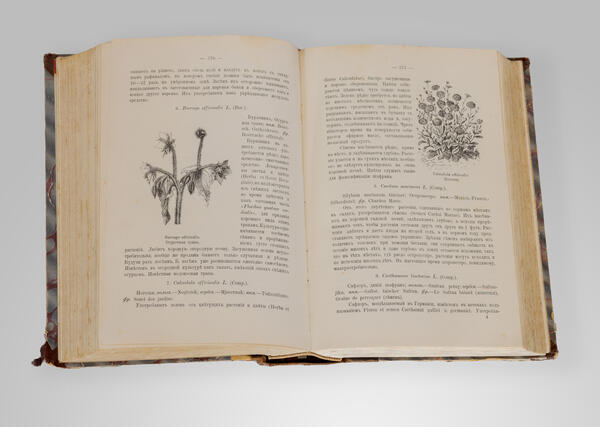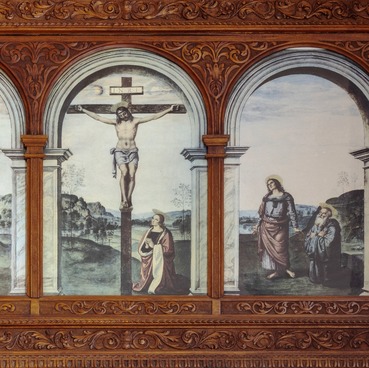In 2016, the book collection of the Livadia Palace Museum was enriched with books that used to be part of the library of the imperial estate “Livadia” on gardening and horticulture. One of these books is the monthly magazine “Orcharding”.
These books are pamphlet volumes of periodicals, in other words, they are annual filings of newspapers and magazines on industrial and individual gardening, orcharding and horticulture published in Russia, Germany and Austria-Hungary in the late 19th and early 20th centuries. These editions were published from 1870 to 1913. The scientific articles in them served as a table guide in the arrangement of Livadia park for its numerous gardeners — from Klimentiy Ivanovich Gekkel, who served in Livadia from 1866 to 1874, to Eduard Iosifovich Renger, who worked there since 1896.
The book’s design is traditional for the book culture of the 19th and early 20th centuries. The book is in a hard composite binding. The binding covers are lined with colored and stained “marbled” paper. The corners of the covers are wrapped with cloth. The spine is of embossed black leather. The single blue front sheet features a title, sub-title data, and an illustration. On the back of the upper cover is a red paper sticker with the inscription “The Printing and Binding Office of N. N. Vakhtin in Yalta”. On the back of the lower cover is an ex-libris of the library of the Livadia estate (The Garden section). The pagination, i.e. serial numbering of pages, is Arabic. The book block includes 776 pages. The pamphlet volume contains 12 issues of the annual set with articles on industrial and individual orcharding and horticulture, illustrated in black and white. Each separate issue is followed by advertisements on the acquisition of gardening tools, seedlings and seeds of plants, on the publication of horticultural periodicals and the opportunity to purchase them, reports of the secretary on the work of the society in the current year, work plans for the next year, income and expenditure estimates, minutes of meetings of the board. The typographical and lithographic printing is in black.
The book is currently in one of the bookcases in the “Library” room.
These books are pamphlet volumes of periodicals, in other words, they are annual filings of newspapers and magazines on industrial and individual gardening, orcharding and horticulture published in Russia, Germany and Austria-Hungary in the late 19th and early 20th centuries. These editions were published from 1870 to 1913. The scientific articles in them served as a table guide in the arrangement of Livadia park for its numerous gardeners — from Klimentiy Ivanovich Gekkel, who served in Livadia from 1866 to 1874, to Eduard Iosifovich Renger, who worked there since 1896.
The book’s design is traditional for the book culture of the 19th and early 20th centuries. The book is in a hard composite binding. The binding covers are lined with colored and stained “marbled” paper. The corners of the covers are wrapped with cloth. The spine is of embossed black leather. The single blue front sheet features a title, sub-title data, and an illustration. On the back of the upper cover is a red paper sticker with the inscription “The Printing and Binding Office of N. N. Vakhtin in Yalta”. On the back of the lower cover is an ex-libris of the library of the Livadia estate (The Garden section). The pagination, i.e. serial numbering of pages, is Arabic. The book block includes 776 pages. The pamphlet volume contains 12 issues of the annual set with articles on industrial and individual orcharding and horticulture, illustrated in black and white. Each separate issue is followed by advertisements on the acquisition of gardening tools, seedlings and seeds of plants, on the publication of horticultural periodicals and the opportunity to purchase them, reports of the secretary on the work of the society in the current year, work plans for the next year, income and expenditure estimates, minutes of meetings of the board. The typographical and lithographic printing is in black.
The book is currently in one of the bookcases in the “Library” room.





